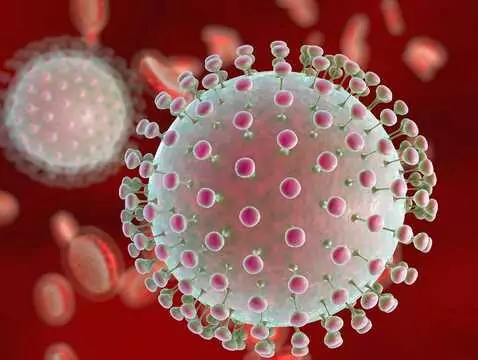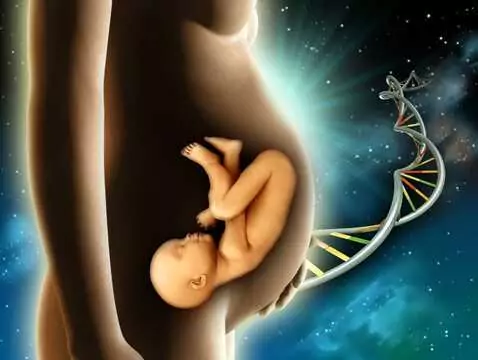
Charge syndrome - a rare genetic disease in children
Charge syndrome is categorised as a rare genetic disease that is caused by a mutation in the CDH7 gene. In Europe, an estimated one in a hundred thousand healthy babies is born with Charge syndrome.

Measles - are we at risk of an epidemic?
Measles is a viral disease characterised by high fever, inflammation of the mucous membranes of the respiratory system and the conjunctiva, due to the virus inducing the disease process. In the next...

Electrolyte disorders and their impact on health
Ensuring proper electrolyte balance plays a huge role in our daily lives. Many of us forget about proper hydration and, in states of deficiency, electrolyte supplementation. What are the consequences...

What is retinopathy of prematurity?
Retinopathy is a disease of the so-called immature retina. It occurs in children born prematurely, in whom the normal structure of the retina has not developed. Adequate ophthalmic and paediatric...

Influenza under a magnifying glass, or what influenza looks like from a laboratory point of view
Influenza is a seasonal infectious disease, the complications of which can significantly affect the deterioration of our body's health and can be far-reaching in time. The difficulty in treatment...

Neonatal diabetes: researchers have discovered one of the pathomechanisms of the disease
We already know a lot about diabetes - for example, it is known that type 1 diabetes is mainly associated with insulin deficiency and type 2 diabetes is mainly associated with insulin resistance....

10 symptoms in a child that should worry you
A child's rate of development is an individual matter. There are, however, behavioural patterns and symptoms that may indicate certain irregularities in the child's development. Causes for these may...

Keeping your child safe during procedures with anaesthesia - here's what you should know
Malignant hyperthermia (malignant fever) is a genetic condition that can turn a seemingly routine surgical procedure, or even a simple visit to the dentist, into a serious risk for the child. It is...

Viral diseases - what should you know?
Viruses are classed as microorganisms on the borderline of living matter. Scientists dispute whether to consider viruses as living or dead organisms. These unusual "creatures" cause a number of...

measles without secrets!
For years, measles has been rumoured to be a disease that most often affects people of school age. However, never before has this topic been as popular as it is today. All because of the epidemic and...

Poorly treated flu in a child a cause of contracting a dangerous syndrome?
Reye's syndrome is considered to be an extremely rare disease with extremely serious consequences. Reye's syndrome affects both children and adults, although the syndrome is predominantly seen in...

World Diabetes Day
This international holiday has been celebrated since 1991. however, the 14th day of November was not chosen at random, as it commemorates the anniversary of the birth of the great Canadian scientist...

RS virus - why is it dangerous?
Every child before the age of two will come into contact with the RS virus. Unfortunately for premature babies and immunocompromised children, contact with RS virus can be life-threatening. What...

Which disease entity is hidden under the mysterious symbol XXY?
Klinefelter's syndrome is categorised as a genetic disease that causes a change in the karyotype. What are the characteristics of Klinefelter syndrome? Who is affected? What is the course of...

Ultra-rare and rare diseases
Contrary to appearances, rare diseases are not as rare as the name suggests. Considering individual disease entities, it may be that a few people worldwide suffer from a particular disease. However,...

An alternative to cord blood banking?
Wondering whether cord blood banking is worth it? Do you want to take the best possible care of your baby's health - now and in the future? It is worth exploring alternatives to this solution that...

Little sleepwalker - somnambulism in children
Somnambulism (sleepwalking, sleepwalking) in children is not an uncommon disorder. The largest group are children of pre-school and early primary school age. The episode involves getting out of bed...

Intussusception - one of the most common causes of surgical intervention in paediatrics
Intussusception is the displacement (insertion) of part of the intestine into another part of the intestine. The largest group of patients affected by this pathology are infants with a peak incidence...

Insulin pump: how does it work and which children with diabetes can receive one?
An insulin pump is a device that mimics the natural secretion of insulin by the pancreas. It has many advantages and for this reason many diabetics would like to benefit from this treatment method,...

Sjögren's syndrome - what is the disease?
Sjögren's syndrome is classified as an autoimmune disease. One of the first worrying symptoms that may suggest autoimmune problems are defects in the normal structure and function of the lacrimal...




